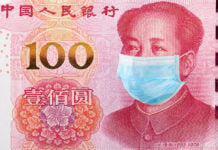Having eclipsed the United States as the world’s largest economy, made territorial claims against Japan, asserted hegemony over the South China Sea and rattled sabers over the country of Taiwan that they regard as a “renegade province”, Red China has another reason to pick up the phone when Obama calls – a generous foreign aid package that they receive each year.
That’s right.
China is wealthy enough to amass $1.3 trillion in U.S. treasury bonds making the U.S. China’s biggest debtor nation but that hasn’t stopped the flow of U.S. dollars to support the communist government in Beijing.
According to ForeignAid.gov., China received $12.3 million from the U.S. State Department and the U.S Agency for International Development (USAID) in 2014 with another $6.8 million so far in the pipeline for 2015.
The aid, which taxpayers are told will be used to fight pollution and promote democracy in China, has been dismissed as a drop in the bucket against the backdrop of the more than $50 billion the U.S. gives away each year.
Speaking on behalf of taxpayers, Ian Vasquez, Director of the Center for Global Liberty and Prosperity at the Cato Institute, said:
“The idea that China needs this foreign aid, and that it can make any difference in China, is laughable . . . what we’re doing is borrowing from China and giving some of that money back to China, so it’s a loan with interest. This is an expensive way to do business.”
Aside from being China’s biggest debtor nation, the United States is also a great source of stolen intellectual property from private companies and the wholesale theft of technologies from the U.S government.
Using its’ cyber warfare capabilities, China has and continues to save billions of dollars in research and development costs – particularly in the military and space technology sectors.
Stolen technology has allowed China to leap frog their capabilities forward by years as they grind down U.S. leadership in the projection of power, military countermeasures, computer technology and industrial materials and processes.
To make matters worse, China keeps U.S. access to Chinese markets on a short leash blocking U.S. exports to the country until domestically made knockoffs are ready for sale.
For those who say $12.3 million is a trivial amount to spend on China, they should consider that $12.3 million could:
• Buy 769 Track Chairs for disabled veterans through The Independence Fund
• Provide private school scholarships to 724 children for a year according to Great Schools.org. And,
• Fully vaccinate 5,600 Americans from birth to 18 years according to the Centers for Disease Control and Prevention (CDC).



























